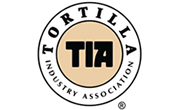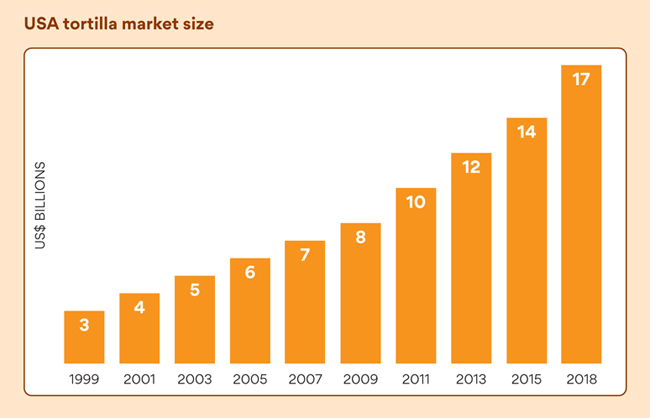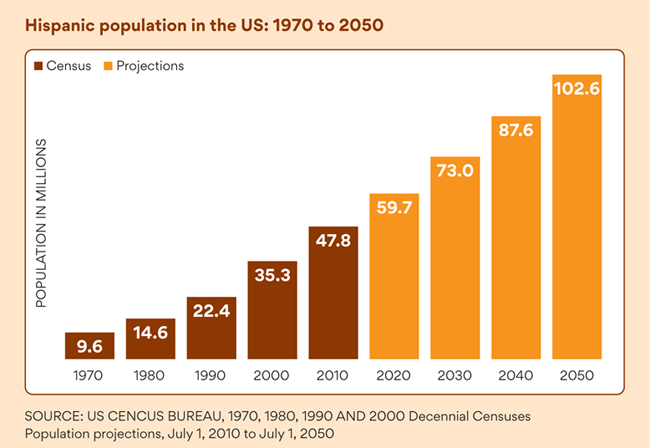 The earliest evidence of people using fire to cook food is from the Neanderthal/Homo Sapiens intersection about 75,000 years' ago. Flour milled from different grains and mixed with water, then baked on a fire-heated rock were the first flatbreads and have remained a staple for much of humanity over the past 5,000 years. In fact, the most ancient original bread known to humans is flat bread.
The earliest evidence of people using fire to cook food is from the Neanderthal/Homo Sapiens intersection about 75,000 years' ago. Flour milled from different grains and mixed with water, then baked on a fire-heated rock were the first flatbreads and have remained a staple for much of humanity over the past 5,000 years. In fact, the most ancient original bread known to humans is flat bread.
In the Middle East this evolved into Pita and Lavash, in India, naan or chapatti; in China, they call it po bin; the North American First Nations made johnnycake; the Norwegians, flattbrod; in Ethiopia, injera; among the ancient Israelites, it was matzoh.

But in Meso-America, what today is Mexico, corn was the principal grain. So, the peoples of that region developed a process for cooking corn with water and lime producing a mash called Nixtamal, draining and shaping it into doughballs that were then flattened and baked on a flat heated metal griddle called a Comal. The Aztecs and other speakers of the Nahuatl language in the region called this flatbread Tlaxcall, and its use has been documented at least as far back as 500 BC.
When explorers from Spain reached the region and encountered many new things there, this yellow flat disc-shaped food reminded them of something from back home they called "Tortilla", which was also round yellow and rather flat, so they gave it the same name even though their own version was basically an omelette made with eggs with potatoes and onions mixed in. As the language and culture of the Spanish conquerors ended up prevailing over these lands, so did the name Tortilla for this flatbread.
"Tortillas are the fastest growing sector of the entire baking industry world-wide"

Today, flatbreads taken together worldwide make up the largest total block in consumption of all bread products. And Tortillas are the fastest growing sector of the entire baking industry world-wide. The traditional corn tortilla was soon joined by a version made from wheat flour whose popularity skyrocketed over the years to the point where at least in the US, we see about a 50/50 market split between corn and flour tortillas. This varies by country – in most of Europe, flour tortillas have a very large majority of market share compared to corn, except in Italy where it's the inverse and corn dominates. As to the cradle of tortillas, Mexico, the market there is stable and saturated with a near even split between corn and flour. Manufacturing there is carried out by a large number of very small manufacturers rather than being aggregated in the hands of a limited number of very large ones.
TIA tracks all products that start life as tortillas, for example, tortilla chips and tacos which are made from tortilla dough which is then fried or baked to crispness. Whilst the flavours may be different the remarkably the cooking methods remained similar for a long time afterwards. But due to modern society's increasingly complex dietary preferences and regulatory demands, there has been an explosion in the variety of flatbread types, baking methods, ingredients and formulation.
These complexities have created tremendous and growing challenges for all who seek to produce flatbreads commercially. The need for manufacturers to join forces, exchange information, share best practices and learn the latest in formulation advances and regulatory requirements, gave birth to the Tortilla Industry Association, or TIA in the west coast of the United States in 1989. Founded as a non-profit organisation, it began holding an Annual Convention in the US which featured a combination of an Expo hall, Education sessions, and networking social events. Soon, the thirst for knowledge among industry companies compelled TIA to launch a 2nd event per year, its TIA Technical Conference which focuses on educational sessions plus a day of factory tours where attendees can see first-hand how other companies in the industry operate.

Originally, Tortilla production and consumption in the US was largely concentrated in a geographic arc from California down to Texas. In the 1990s, however, explosive growth in the order of 9%-12% annually saw the tortilla markets move farther afield as far as the Chicago, New York, Florida and Atlanta areas which have also since become major hubs that rivalled the traditional points of origin.
TIA's market data and research show that the US market for all tortilla products reached a sales volume of US$17 billion in 2018 and experienced a sharp increase in growth during the pandemic lockdown when more people stayed home and ate there.
Getting accurate data for the tortilla market from tradition sources is challenging and often largely wrong. You may have seen some market data vendors mention smaller figures for tortillas. This is because they focus only on retail sales of tortillas themselves, during which their bar codes are scanned at point of sale but which crucially leave out the following:
- - All tortillas integrated into other products (e.g., frozen dinners, bringing them into a different category)
- - All product starting life as a tortilla but processed into a different category (the huge chips market, tacos, tostadas, etc., tortilla chips are treated like potato chips as snacks which is a different category)
- - All tortillas sold through or made inside the country's 80,000+ Mexican restaurants
- - All tortillas made for fast food chains (McDonald's wraps, Taco Bell, Chipotle, etc., the total markets of which are vast)
- - All tortillas made fresh within retail stores, Hispanic chains, family-owned mercados, etc. (44,000 stores in the US alone)
- - All tortillas made for institutional channels (primary schools, universities, hospitals, prisons, military bases, cafeterias, etc.)
TIA, on the other hand, collects data for and from all its member sources and integrates them for a more accurate picture of the overall market.
Two factors fueled this rapid growth: Demographic and non-demographic forces. On the demographic level, the US at that time began reaching a critical mass of population growth among Hispanic Americans, due to both immigration rates and birth rates for whom tortillas were a beloved comfort-food whose consumption of same was a matter of tradition and habit. But this alone would not account for the continuing acceleration of growth. This is where the non-demographic forces add fuel to the fire, and whose relevance is more applicable than the demographics of the growth of the industry occurring in the markets of Europe Australia/New Zealand, the Middle East and elsewhere around the world.
Specifically, in the past two decades a confluence of three factors resulted fortuitous boost in the tortilla market: the intensifying of consumer interest in healthier eating habits, a broader variety of formulations and a greater complexity of regulations. Thereafter, Tortillas, soon became a much sought-after food for those desiring healthier eating including low-carb, organic, non-GMO, clean-label and similar attributes. At the same time, new types of tortillas started to become available such as Kosher and gluten-free thus attracting even more consumers. Finally, increasing government regulations added complexity to the production process as well as labelling disclosures that made it even more necessary for the industry to band together to share the latest knowledge and best practices.
Increased demand also meant increased competition. This in turn spurred innovation in manufacturing processes, equipment and additives among tortilla manufacturers and their suppliers. So, if one wonders what could possibly be new with a 3,000-year-old product, spending a day or two at a TIA conference would be quite an eye-opener!
Just as tortillas expanded across the US, they have also been expanding worldwide. In response to demand by TIA's member companies in Europe, therefore, TIA launched a new event, its TIA Europe Conference in 2017. The popularity of this event has grown as word was spread to colleagues and friends by each year's attendees. Topics for the educational sessions for this event as with all other TIA events, are selected based on surveying TIA's e-mail list of over 6,000 tortilla professionals world-wide and seeing what issues concern them the most. The survey results are tallied and ranked, then TIA identifies leading experts for each topic and invites them to come and give presentations at the conference.
As TIA members increasingly participated in other baking industry events, it became clear that a great deal of similarity exists between tortillas and other flatbreads with regards to production methods, processing equipment, ingredients, and regulatory challenges. Consequently, in 2019 TIA launched a sister organisation called the International Flatbreads Federation (IFF). Its activities are co-located with TIA events with membership in either being reciprocal. The goals of IFF are to assist flatbread manufacturing companies become more successful, give their executives an opportunity to serve on its advisory board and to assist those seeking to explore expansion into tortilla production.
Participants in TIA Europe are surveyed after each event with over 80% rating their educational sessions as either "Excellent" or "Very Good" and over 70% of return to the following year's conference. Location of the TIA Europe conference rotates around various destinations, with this year's event scheduled in Belgrade Serbia on the 14-15th September 2021 at the Crowne Plaza hotel. Classroom sessions will fill a day and half, with a cocktail reception in the first evening featuring commercial tabletop exhibits by various vendors. Subsequently, a field trip will be the order of business for the second half of day two. On this field trip, attendees will tour a tortilla manufacturing factory, a dry ingredients factory and visit a processing equipment facility. Registration fees include all classroom sessions, bus transportation to the factories, lunch and dinner, continental breakfast and cocktails. Discounts will be available to those registering before 1st August and the Crowne Plaza has agreed to give a special discounted rate to TIA attendees.
"The TIA Europe conference rotates around various destinations, with this year’s event scheduled in Belgrade Serbia on the 14-15th September 2021"
Find out more:
TIA Website: www.tortilla-info.com
Contact: TIA president;'Jim Kabbani:
Email: jkabbani@tortilla-info.com